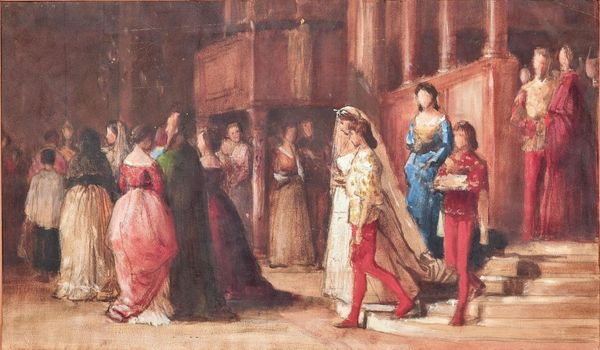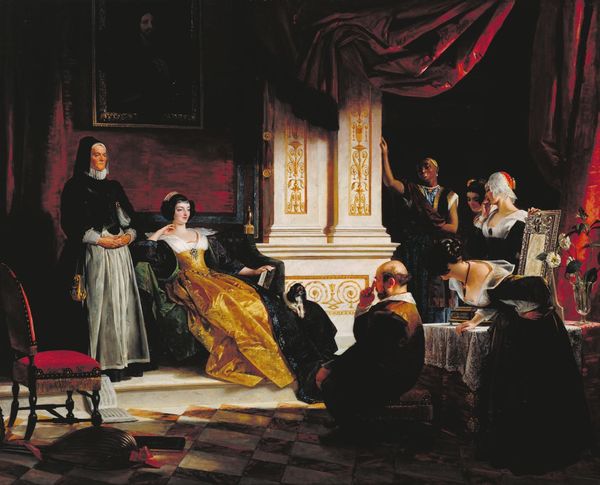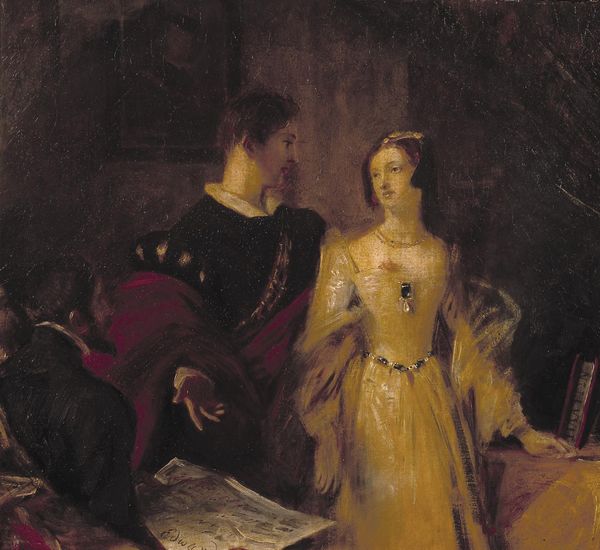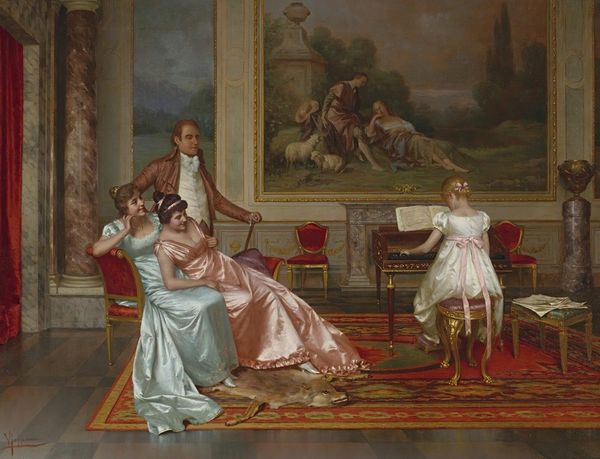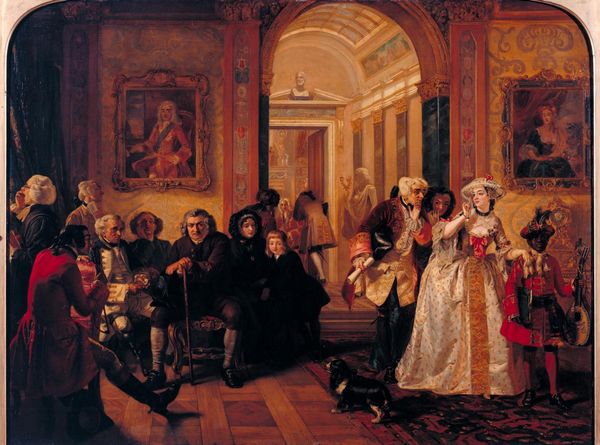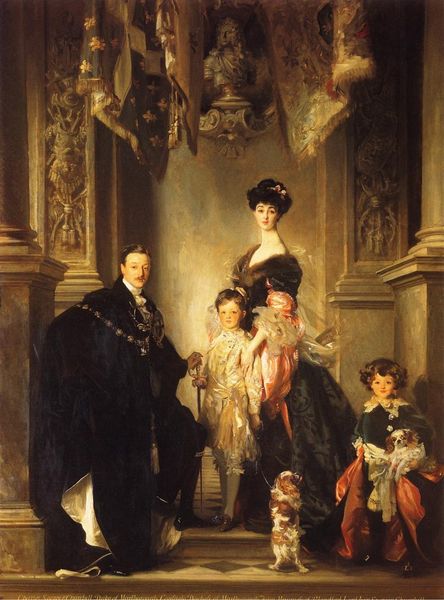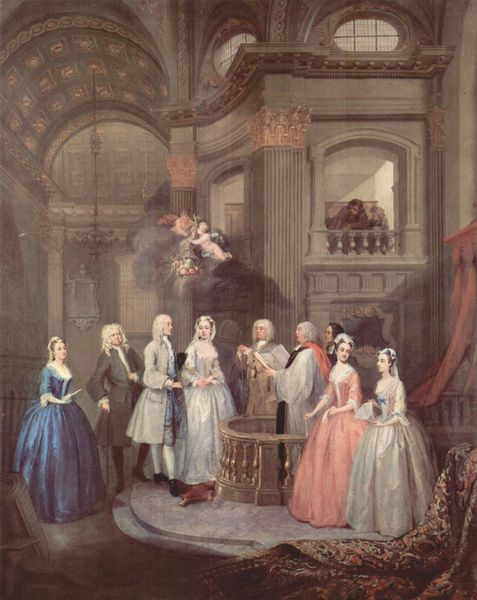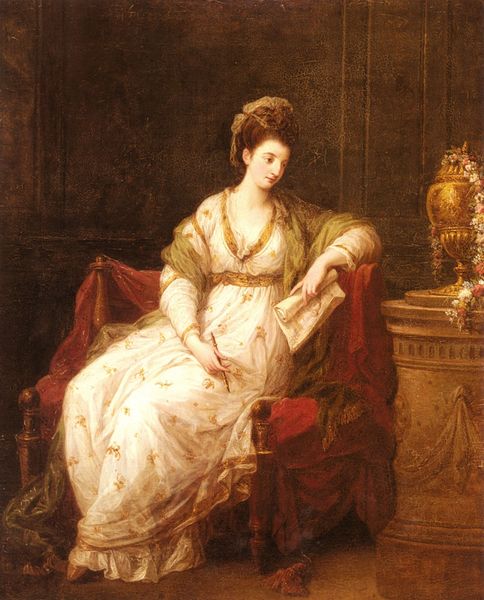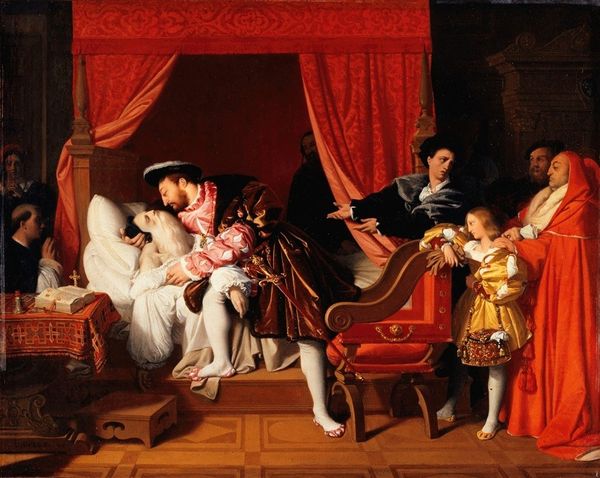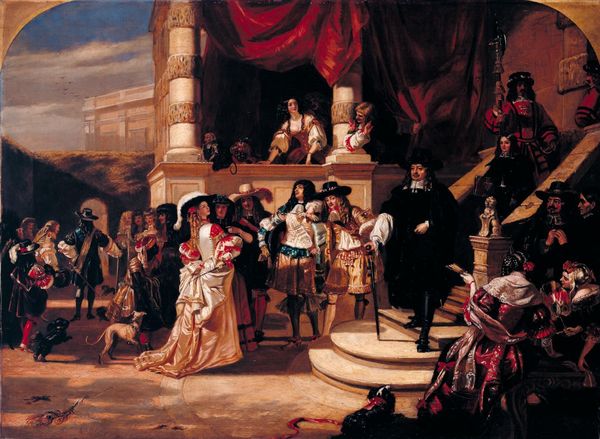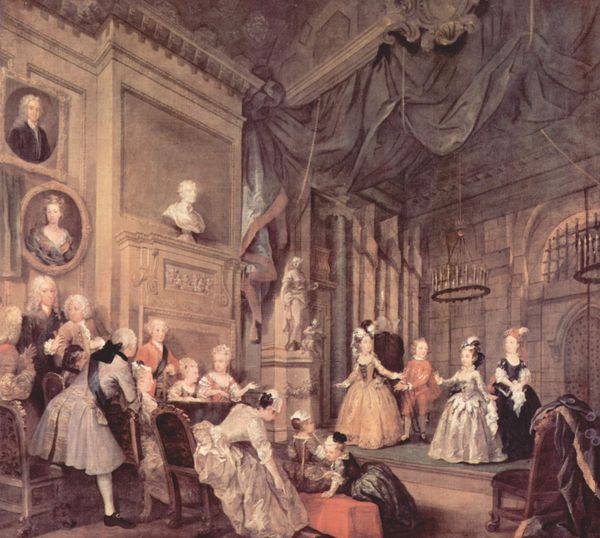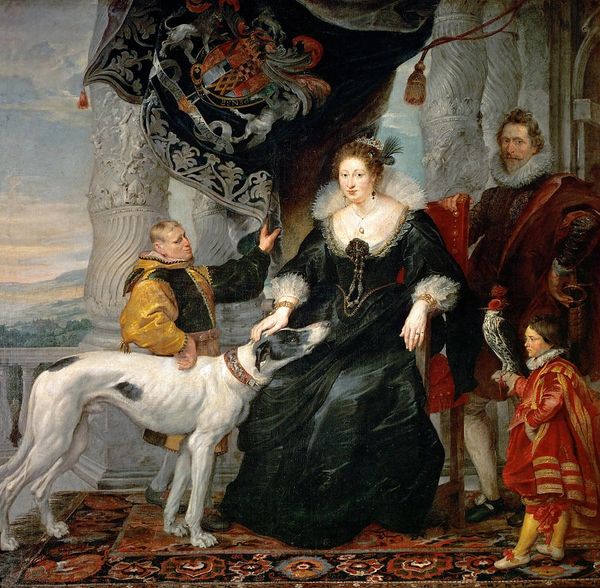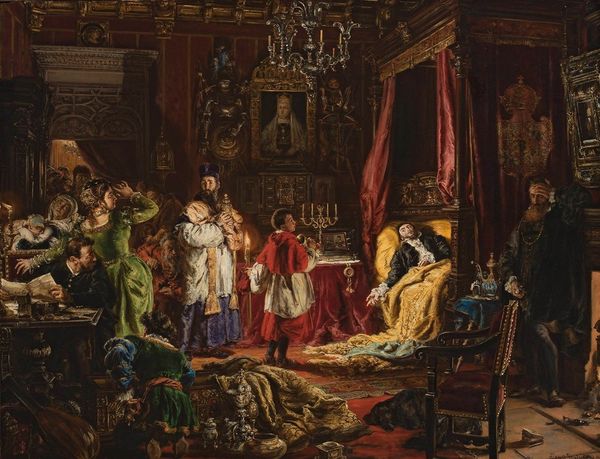
Napoleon III, Eugenie and their Son for Adoption Siamese Ambassadors (detail) 1861
0:00
0:00
Copyright: Public domain
Jean-Léon Gérôme’s painting presents us with a formal tableau, a moment of imperial reception rendered in oil on canvas. The eye is immediately drawn to the pale figures of Napoleon III, Eugenie, and their son, positioned centrally against a backdrop of muted tones. The composition is rigorously structured, emphasizing hierarchy and order. The painting's semiotic system reveals much about the dynamics of power and representation. The subjects' costumes, the opulent throne, and the architectural details all function as signs of imperial authority. Yet, the subdued palette and the somewhat rigid poses suggest a tension, a performance of power rather than its natural expression. The gaze of each figure directs the viewer through a narrative of social relations. Consider the gaze and arrangement. These elements create a field of visual signs that invite us to question the nature of representation itself. In this play of gazes and formal arrangements, Gérôme's painting opens up to a broader cultural discourse, challenging us to reflect on the meanings we assign to images and the power structures they uphold.
Comments
No comments
Be the first to comment and join the conversation on the ultimate creative platform.
